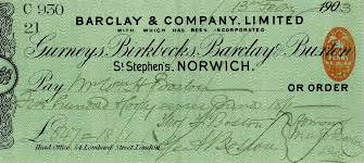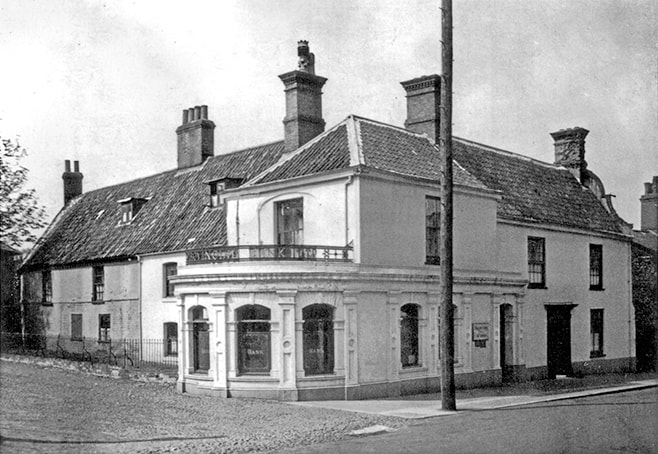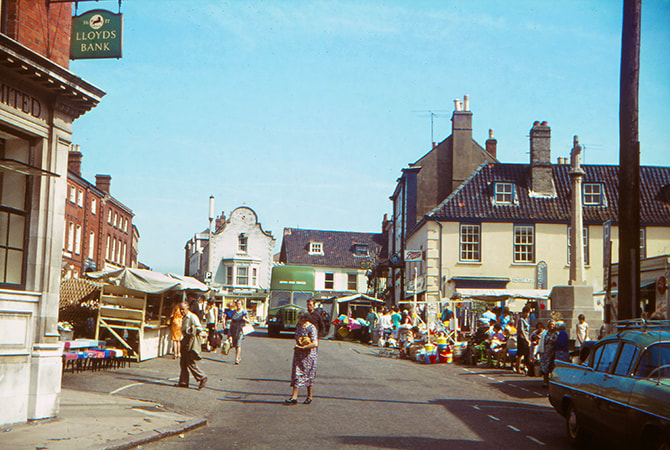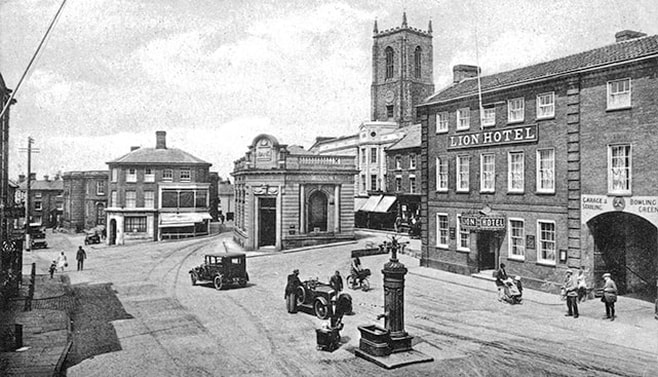08. BANKSAn entry in the Fakenham Trade Directory in 1791 read: "There is a banking-house in this town, trading under the firm of R. Gurney, B Gurney, J. Gurney, J. Birkbeck, J. Taylor, and J. Peckover; their bills are payable at Messrs. Barclays and Tritton’s London".
The next year it said: "that a new bank is opened at Fakenham in this county by Mr. Joseph Peckover, a gentleman of great respectability and responsibility, in conjunction with Messrs. Gurneys". Joseph Peckover resigned from the partnership in 1816 and in 1820 the bank was referred to as Gurneys, Birkbeck and Rawlinson Bank. It was still the only bank in Fakenham and was on the northeast corner of the Market Place next to the Lion Inn. It is not clear whether that was the original site, but the survey of 1839 has the building described as Gurney and Co. bank and offices. In 1896 Gurney, Birbeck, Barclay and Buxton Bank in Fakenham became part of Barclays with its local head office in Kings Lynn. The Savings Bank was opened at the south end of Oak Street in 1829 probably near Tesco’s entrance. Savings banks were popular in the 19th century but declined with the rise of the Post Office Savings Bank, one of which opened in Fakenham.
In 1835 a new Norwich bank called the East of England Bank was established and a branch was opened in the south east corner of the Market Square; it closed in 1864 with heavy debts. The National Provincial Bank of England, began in 1833 and merged with the Westminster Bank in 1970. It is first recorded in the trade directory of 1879 and only did business on Market Day each week. It is uncertain when it moved to the corner of the Market Place and Bridge Street though it is known that John Page of Blakeney designed the entrance of the new bank (now NatWest). The next Plaque is on the Nationwide Building Society, south side of the Market Place. |
|





